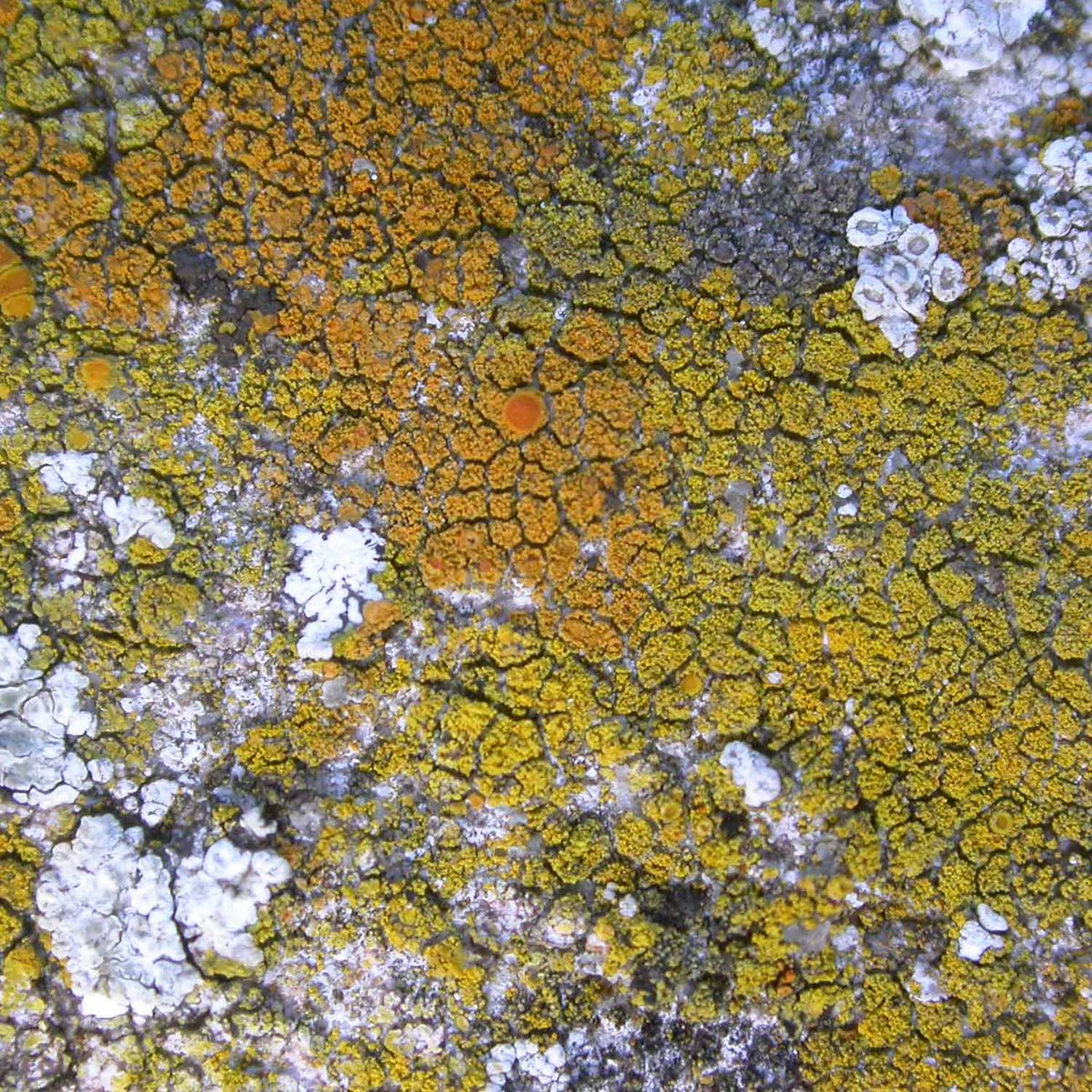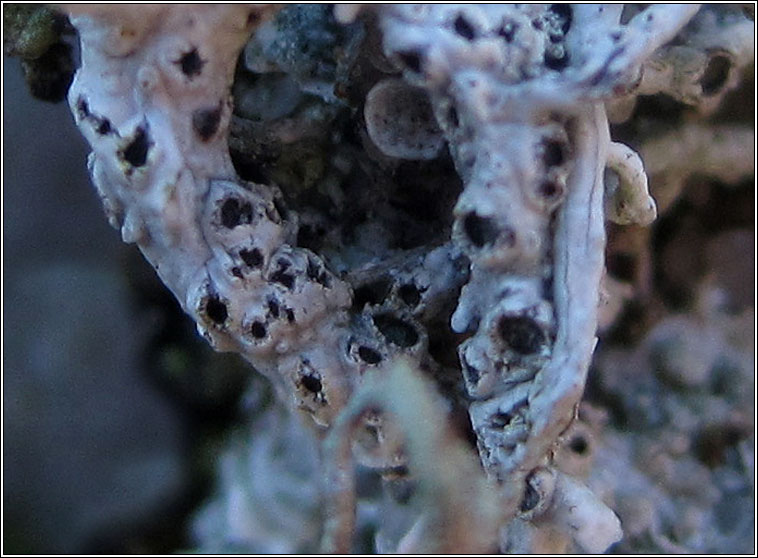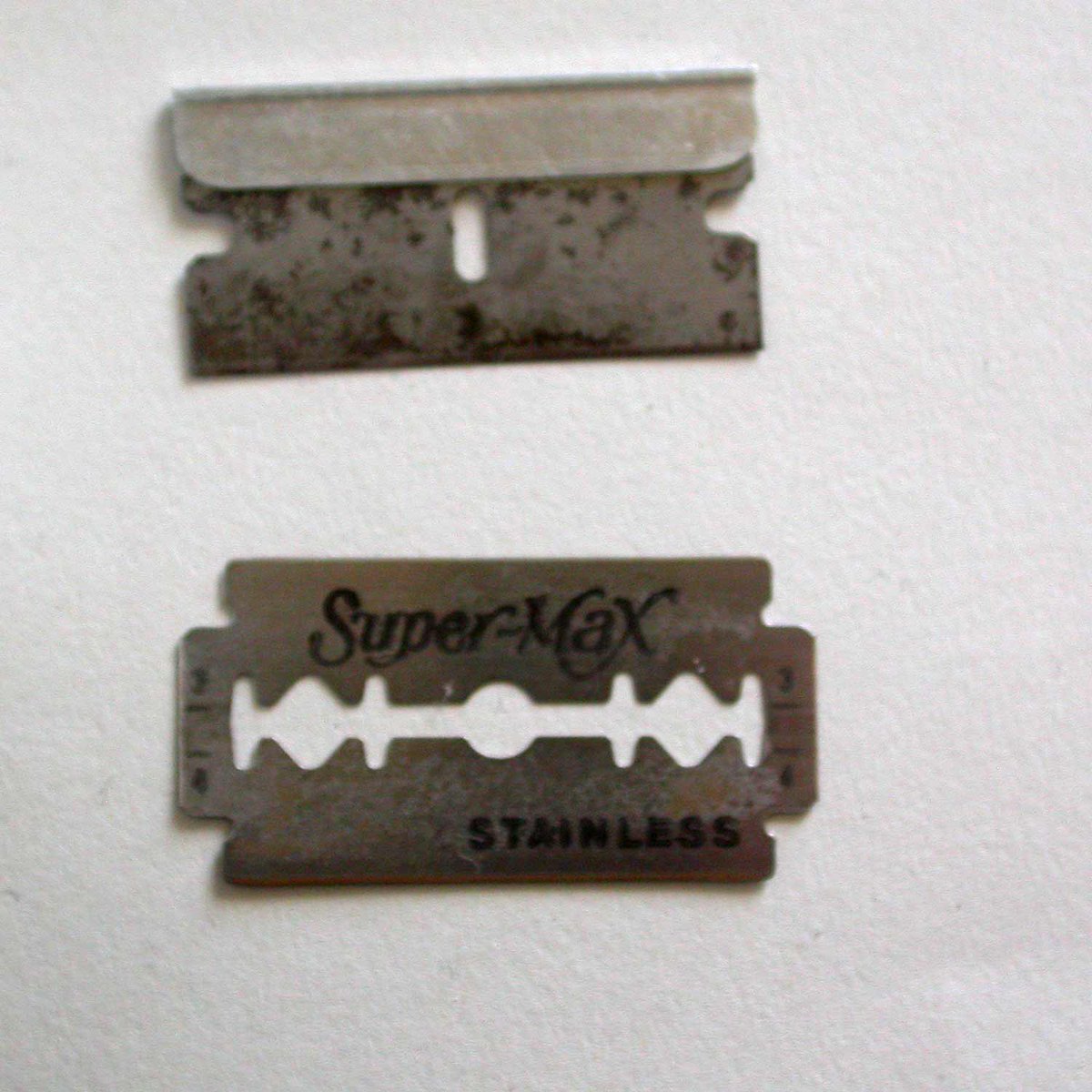
West and East facing sides of the limestone gravestone to Mercy Ann Smith, died 1911. The latest stone to be scrutinised in detail. 24 lichen spp. present, over a third of which would have been unrecognised or likely misinterpreted at the start of this century.
Thread

Thread


7/24 are members of the Verrucariaceae, a generally poorly understood and misinterpreted family. Caloplaca dichroa was described as new to science in 2006. V. elaeina and V. ochrostoma were lost to the consciousness of most lichenologists until into the present century. 

First for a couple of well known and uncontroversial lichens, both Caloplaca (despite appearances). C. flavescens and C. teicholyta. 



Caloplaca dichroa, living up to its name with orange and yellow individuals. Described as new to science in 2006 (despite being the common blastidiate Caloplaca on tops of limestone memorials across the country, and having distinctive spores). 

What about this dark scurfy crust with minute black apothecia. I had a hunch in the field but had to examine microscopically to confirm Catillaria chalybeia (more common than generally realised on nutrient-enriched limestone). 

A minute black perithecium (just above centre) sits at the edge of an area of bare stone, cleared of almost all lichens, algae and cyanobacteria. The clearing is caused by this strange fungus/lichen? Sarcopyrenia gibba (which has bizarre propeller shaped spores). 

Verrucaria ochrostoma, a lichen I revived from obscurity (left half) with grey superficial thallus, and V. hochstetteri (right half) with its thallus immersed in the stone. 

Verrucaria hochstetteri (lower half, immersed thallus + perithecia). Upper half has a similar lichen (looks like the stone has woodworm) but with a raised 'lithocortex'. This could be one of several things in the field, microscopy proved it to be Polyblastia albida. 

Lecanora horiza (upper half) with L. campestris (heavily chewed) below. These two lichens were not distinguished by churchyard recorders until after my work with Jiri Malicek in 2013. 

Here is one of the large, richly muriform Polyblastia albida spores. Difficult to see the septation in fresh material but a few moments heating over a tea light candle flame quickly 'cleared' the spore. 



Catillaria chalybeia in section. Some individuals lack the dark green pigment and then they may be confused with the var. chloropoliza which is a different sort of thing occurring in more specialised habitat. 



During my early microscope investigations, I noticed two features of C. chalybeia not mentioned in the books. The rounded hyphae of the hypothecium are somewhat distinctive. At the time I first saw the pale patches on the photobiont cells, I had no idea they were haustoria. 



The Lecanora albescens has familiar but mysterious 'Ribena' spots. For the first time ever I found a possible culprit as I will illustrate in the next tweet. 

After staining I found strange clusters of minute cells (little over 1 micron) probably arising from hyphae ascending from the lichen tissue. Have I seen the first glimpse of whatever it is that causes purple spots on Lecanora albescens? 



A distinctive basal zone is much more a feature of sandstone gravestones but the base of this limestone one has Caloplaca citrina, Opegrapha ochrocheila and Verrucaria elaeina, not found anywhere else (this zone often neglected during churchyard surveys). 

There is one taxon on the stone that I think is still much misunderstood (Verrucaria nigrescens f. tectorum). We seem to lump at least two separate entities under this name.
I broke the thread so click on this to continue.
https://twitter.com/obfuscans3/status/1487905356848287747
Well actually there is another taxon on the gravestone that seems to contain unrecognised complexity:
https://twitter.com/obfuscans3/status/1208405293090189313
• • •
Missing some Tweet in this thread? You can try to
force a refresh
























